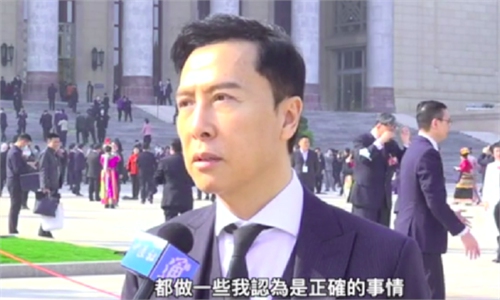ARTS / FILM
China’s top film bases embrace movie-making boom with high-tech studios and historical settings
Dream factories
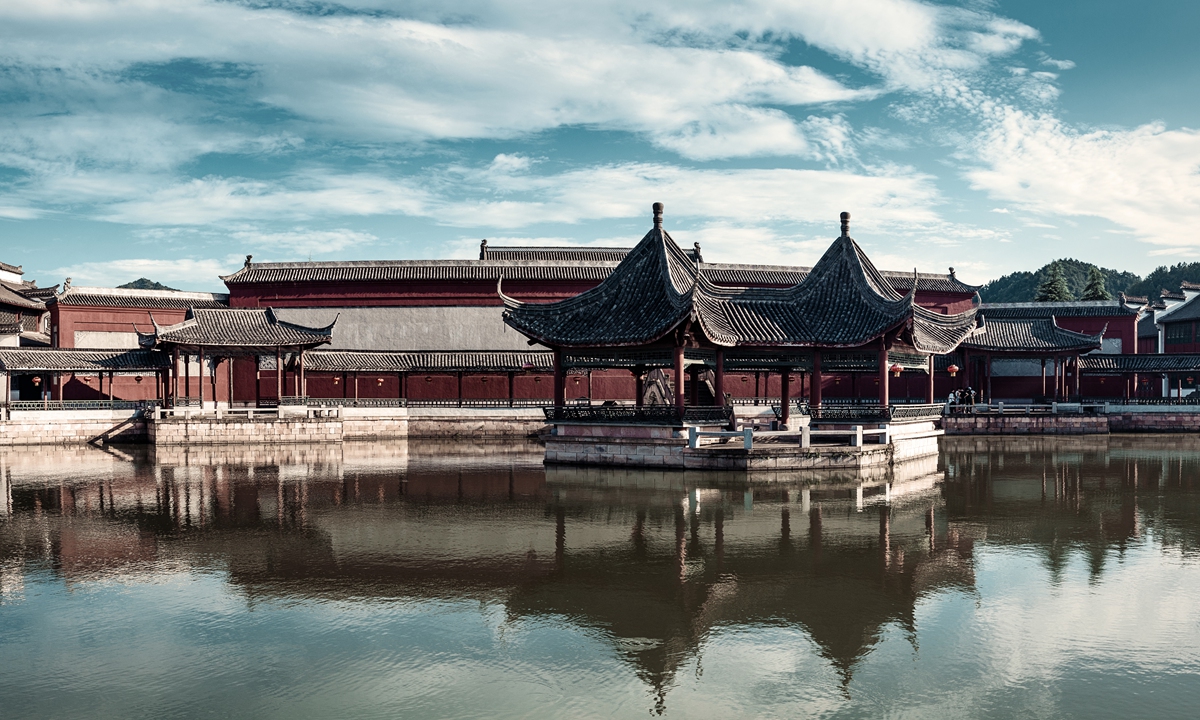
Hengdian World Studios in East China's Zhejiang Province Photo: VCG
Following the success of the domestic box-office blockbuster The Wandering Earth II, which has earned nearly 4 billion yuan ($574 million) since its release in late January, spring has been a true lucky strike for China's Film and TV (F&T) industry, allowing it to bloom again after shaking off the fatigue brought by the pandemic.After China optimized its COVID-19 response in December 2022, the China Movie Database revealed that the Chinese mainland box office had grossed over 14.3 billion yuan to date. The thriving market has encouraged studios to accelerate production on not-yet-released films such as Blossoms Bloom Again and The Champion of Basketball at the country's major film bases Hengdian World Studios and the Qingdao Oriental Movie Metropolis.
Covering China's southern and northern movie production, the two bases - one opened 27 years ago in East China's Zhejiang Province and the another a newcomer equipped with trending technologies in East China's Shandong Province - take the Chinese T&F industry on a "self-innovative path to tell global stories through the lens of Chinese values," Sun Hengqin, the CEO of the Qingdao Oriental Movie Metropolis Industry Holding Group, told the Global Times.
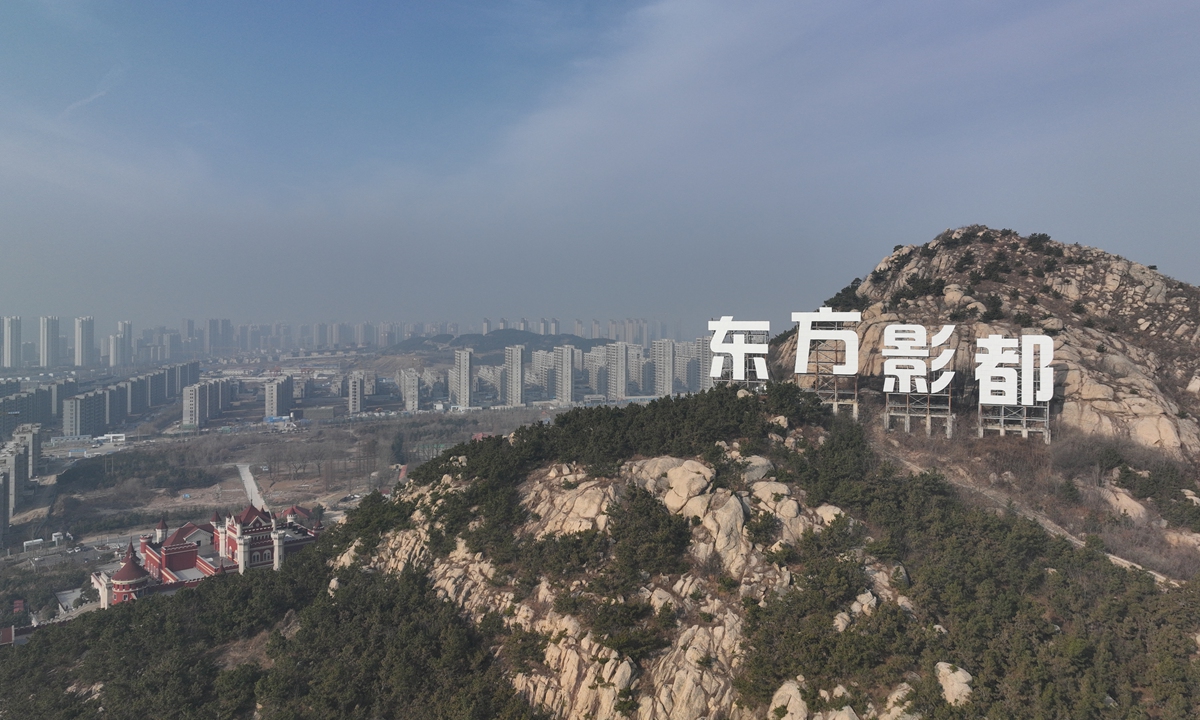
The Oriental Movie Metropolis billboard Photo: Yang Ruoyu/GT
Domestic technologyA massive 3.76 million square meters in size, the Qingdao Oriental Movie Metropolis in Shandong Province has hosted nearly 300 F&T crews since it was opened in 2018.
A total of 40 studios are scattered around the industrial park, each an individual film engine that provides services such as virtual production and aerial and underwater filming.
The base's studio No.5 is the largest virtual production platform in Asia and also the cradle of the sci-fi epic The Wandering Earth II. Zhu Hongchang, a technical engineer at the site, told the Global Times that 90 percent of in-door scenes for the film were produced at the studio.
The studio offers unique "virtual script" production methods. Actors put on motion capture suits and perform scenes, and as they do so their movement data is captured by a camera and simultaneously sent to a view screen that already has rendered backgrounds designed for the film. In this way, directors can get a better idea of what the scene will look like when it is finalized and make changes right there on the spot.
"This greatly improves the shooting efficiency and saves production cost," Zhu told the Global Times.
Guo Fan, director of The Wandering Earth II, once said that instead of choosing overseas shooting facilities in places such as Hollywood, the movie metropolis was his "plan A" that helped his "dreams to shine in reality."
The No.5 studio is not only making use of current high-tech production methods, but is also pushing the envelope in China by developing its own technology.
At the studio, the Lightstage, China's self-developed micro-level face scanning system, has helped reduce the industry's dependency on overseas outsourcing.
Wu Di, the founder of Deemos, a tech company that helped bring Lightstage to the Qingdao base, said that previously scanning usually needed to be sent to Hollywood for processing and the wait for the final product could take several months.
"Such shooting bases boost the country's F&T industry by helping them 'get rid of the constraints' of Hollywood facilities," said Chen Fusi, a film producer, adding that some Chinese facilities can even outperform those in Hollywood.
Taking advantage of the city's coastal location, the Qingdao base is also equipped with an underwater production center that enables crews to film underwater scenes. Shooting takes place in a large tank eight meters underwater, while the director and crew monitor filming through a large window. Another 10,000 square meter area is dedicated to shooting large-scale outdoor scenes.
"We once had horses running through the studio for one film shoot that we hosted," Lu Yi, a staff member at the Qingdao base, told the Global Times, referring to the mythological film Creation of the Gods, which is expected to debut in 2023.

The Shanhubei Bridge to Xingguang Island, home of the Oriental Movie Metropolis in Qingdao Photo: Yang Ruoyu/GT
The Qingdao base is not the only film base that has made Chinese directors bid goodbye to Western studios.Located in Zhejiang, Hengdian World Studios has a 12,000-square-meter indoor studio lot, the largest in the world. Equipped with advanced sound absorbers, the studio is the ideal shooting site for scenes involving explosions. The Battle at Lake Changjin II, another box-office grabber in 2022, was partly filmed at the lot.
The studio's virtual real-time imaging techniques allow scenes like cars driving down the street to be shot indoors.
"Nowadays, it is very difficult to film driving scenes in big cities because of the busy traffic. However, with this facility, we can reproduce real backgrounds by scanning actual streets. Combining this information with the image of a car, we can make it look like the car is actually driving down the street," said Zhou Dongping, a manager in charge of the studio.
Chen told the Global Times that while the base was "temporarily paused" by COVID-19, its powerful facilities have now reconnected with production teams.
By the end of 2022, the rental rate for studio lots at the Qingdao base reached an annual historical high record of 98.17 percent. Over at Hengdian World Studios, 22 production crews were working in January, while another 40 were getting ready to film.
Besides these two large production bases, other smaller-scale bases in China such as the Zhong Shan Movie Town in Guangdong Province, the Bai Lu Yuan Studios in Shaanxi Province and the Shanghai Film Shooting Base have figured out their own targeted path to attract productions within certain genres such as traditional Chinese opera and historical dramas.
"We once used 'Chinese Hollywood' to describe Chinese bases, but now Chinese studios really live up to the title. The term now means that Hollywood-level filming facilities can be found in China," said Fang Muting, an F&T industry insider.
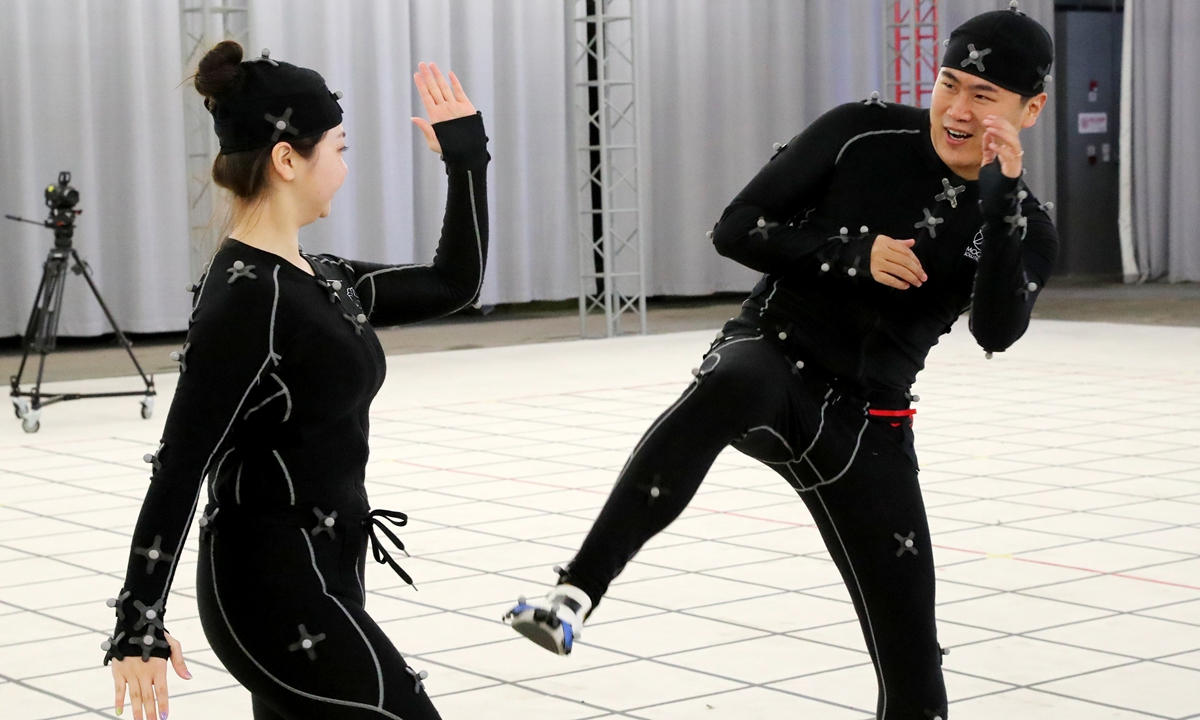
Staff members demonstrate motion capture technology at the Qingdao Oriental Movie Metropolis. Photo: IC
Visualizing Chinese cultureFang noted that besides high-tech facilities, studios are also able to attract productions due to "side mechanisms" that bring "Chinese cultural values" into the production.
Manas Effects, a leading special effects company in the industry based in Qingdao, offers special makeup services and also provides props and concept designs. Si Ji, the studio's founder, told the Global Times that working on concepts for a Chinese production is "extremely difficult" and even top-class Western companies could not grasp them correctly due to cultural barriers.
Taking sci-fi and mythological films as examples, Si said Western narratives and characters are often rooted in the imagination, but for a Chinese production, designs are rooted in the country's "history-based culture."
He said that when designing the bronze taotie figure, a Chinese mythological beast, for director Wu Ershan's Creation of the Gods trilogy, the team carried out historical research on bronze relics from the Shang Dynasty (c.1600BC-1046BC) Yin Ruins to examine the taotie decorations on them. From there they added some modern aesthetics to the mythical creature to meet the tastes of international audiences.
"Traditional Chinese culture is too abstract to be visualized, but we Chinese still have to do it, otherwise the West would never get to see the great depth of Chinese works," Si noted.
The Wandering Earth II's experiment in combining Western dominated sci-fi and Chinese values such as patriotism has encouraged more Chinese-centered scripts be produced in 2023.
According to the 2023 National Film and TV Script Report, a total of 181 films and 20 TV productions were shot in January, with many of them tackling themes such as Chinese history, traditional art and red culture.
Chen, the industry expert, said a "good quality" F&T production should be able to "export Chinese culture."
Of course, Chinese stories cannot be told without actors to perform them. In Hengdian, the recent recovery of the F&T industry has created more opportunities for actors, extras and numerous film crews.
Chen Qihe, a 30-year-old who has been working as an extra since 2018, went back to Hengdian in early February after the Spring Festival since he believes China's optimization of epidemic response will bring him more opportunities.
Compared with his former job as a factory worker, Chen makes more as an extra, earning 3,000 to 4,000 yuan a month.
"I like this job. It's interesting and enables me to meet people across the country," he said.
The number of registered extras at Hengdian has grown to nearly 120,000, and about 8,000 are active at one time.
Jiang Fan, the producer of Blossoms Bloom Again in the Field, told the Global Times that the COVID-19 slowed the industry over the past three years and the studios were very risk averse, but things are getting better now.
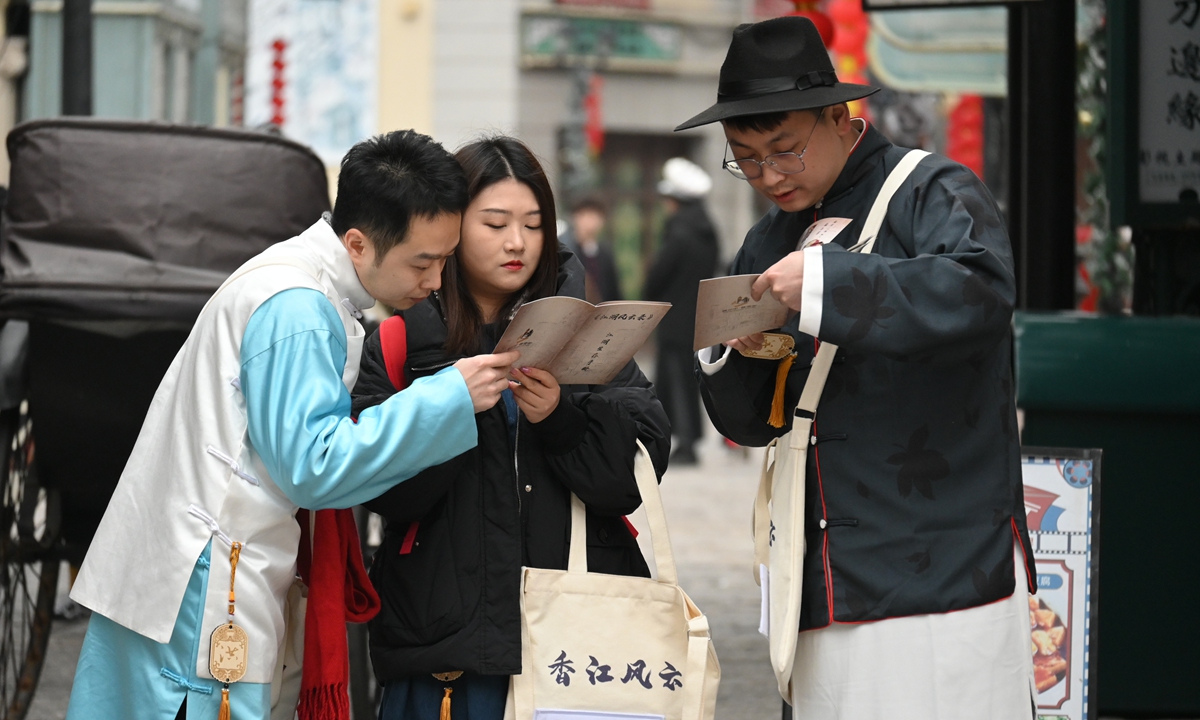
A group of extras prepare for a scene at Hengdian World Studios. Photo: Courtesy of the Hengdian Group
Future outlookThe Hengdian World Studios is also working on expanding its tourism and technological resources to enhance its brand.
More than 800,000 tourists flooded Hengdian during the Spring Festival holiday in January, bringing in some 80 million yuan ($11.5 million) in ticket revenue for the film base, according to Ma Zhenhua, director of the Comprehensive Coordination Office of the Hengdian Film and Television Culture Industrial Cluster. Ma said that the total tourist spending in the Hengdian area reached around 400 million yuan.
A big data center has also been established at the studios to integrate data from more than 3,000 films, over 80,000 TV episodes and 10,000 episodes from online series, said Zhou Yinghao, a staffer at the center.
The center provides virtual recreation of its shooting sites for film crews to access online so they don't have to come to Hengdian to see which site is the right fit for their production.
Back at the Qingdao base, CEO Sun revealed that over the next five years the base will undergo a major expansion into "digital research" to bring in studios that are even more advanced than the No.5 studio.
He noted that the aim of these efforts is to support emerging Chinese F&T studios and give them a solid platform for their art.
"The studio is still exploring better ways to assist China's F&T industry," he noted, adding that the seeds of confidence have already been planted in the industry.

